Key Deliverables in a UX Audit
This post is part of a series

Every UX audit provides important insights and recommendations to improve user experience. The audit’s delivers the relevant information required to align user needs with business goals.
In this article, we will discuss the deliverables of a UX audit and their importance. A positive user experience encourages users to stay loyal to a product or brand, and at Dinghy, our primary goal is to earn and retain your loyal customers by putting their goals and experience first.
What is a UX Audit? Link to this headline
As we discussed in our latest post , a UX audit is a process of evaluating how users interact with a digital product, such as a website or app, with a primary focus on identifying areas for improvement. The audit helps pinpoint pain points and suggests actionable changes to enhance the user experience , making the product more accessible, engaging, and efficient.
Common Deliverables of a UX Audit Link to this headline
The deliverables from a UX audit offer a detailed view of the user experience, highlighting areas for improvement across various aspects of a product.
Below is a list of common deliverables we provide to our clients:
Annotated Screenshots or Video Walk-Throughs Link to this headline
Annotated screenshots or video walk-throughs provide visual documentation of user interactions with an app or website. These deliverables highlight specific issues and areas for improvement, annotated with detailed notes explaining the problems and potential solutions.
Why They Are Important Link to this headline
- Clear Visual Representation: Visual aids help stakeholders quickly understand the issues users face. Annotated screenshots and videos offer a straightforward way to communicate complex problems.
- Focused Analysis: By breaking down issues into specific categories—Product Strategy, User Experience, Interaction, Design, and Implementation—these deliverables provide a focused analysis of each aspect of the user experience.
- Actionable Insights: Detailed annotations offer clear guidance on what needs to be fixed, making it easier for teams to prioritize and implement changes.
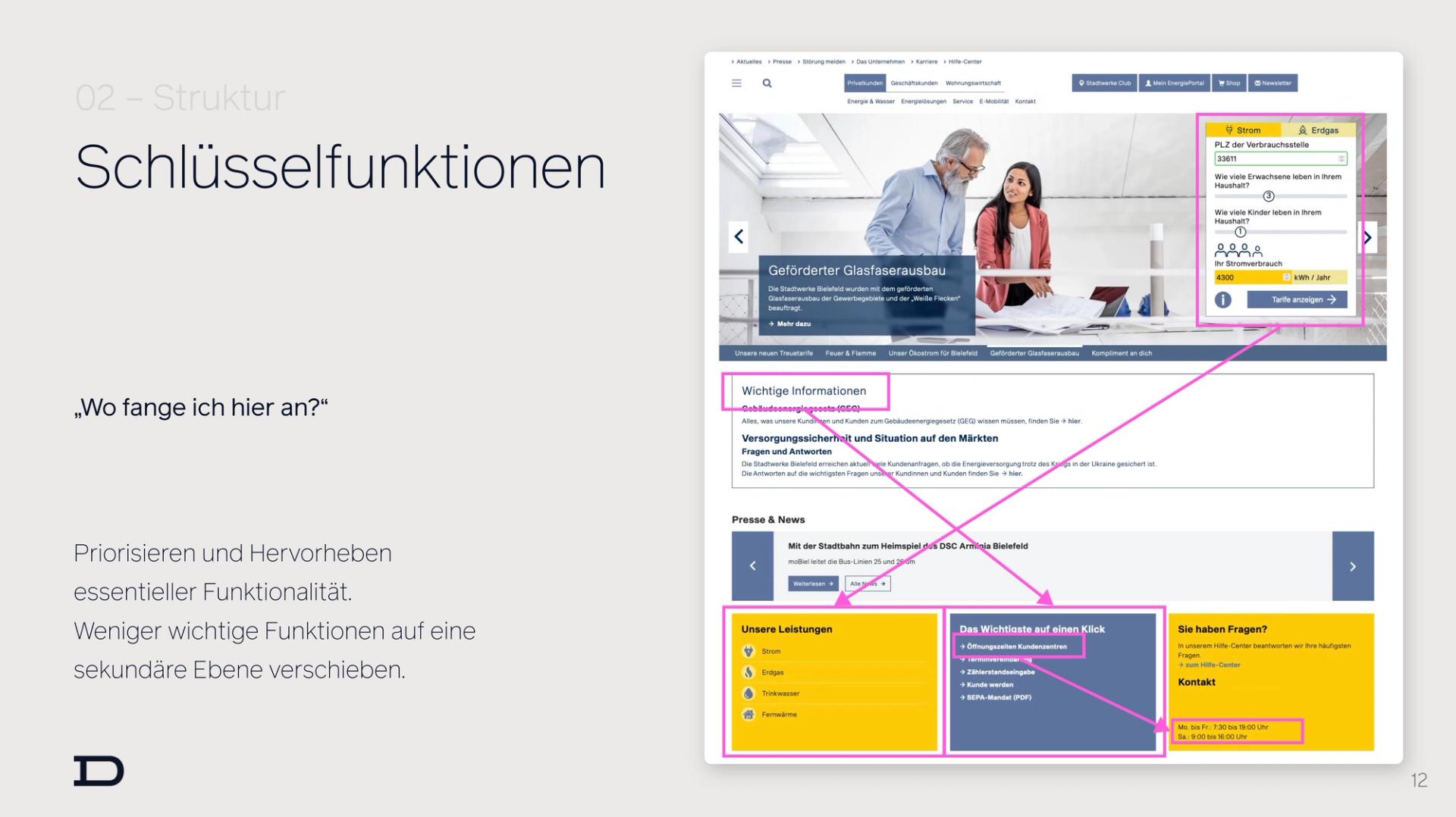
User Journey Documentation Link to this headline
User Journey Documentation is a critical component of a UX audit, offering a detailed map of the paths users take as they interact with an app or website.
This documentation captures the actual user experiences, highlighting every step, action, and decision point from the moment a user begins their interaction until they achieve their goal or leave the site.
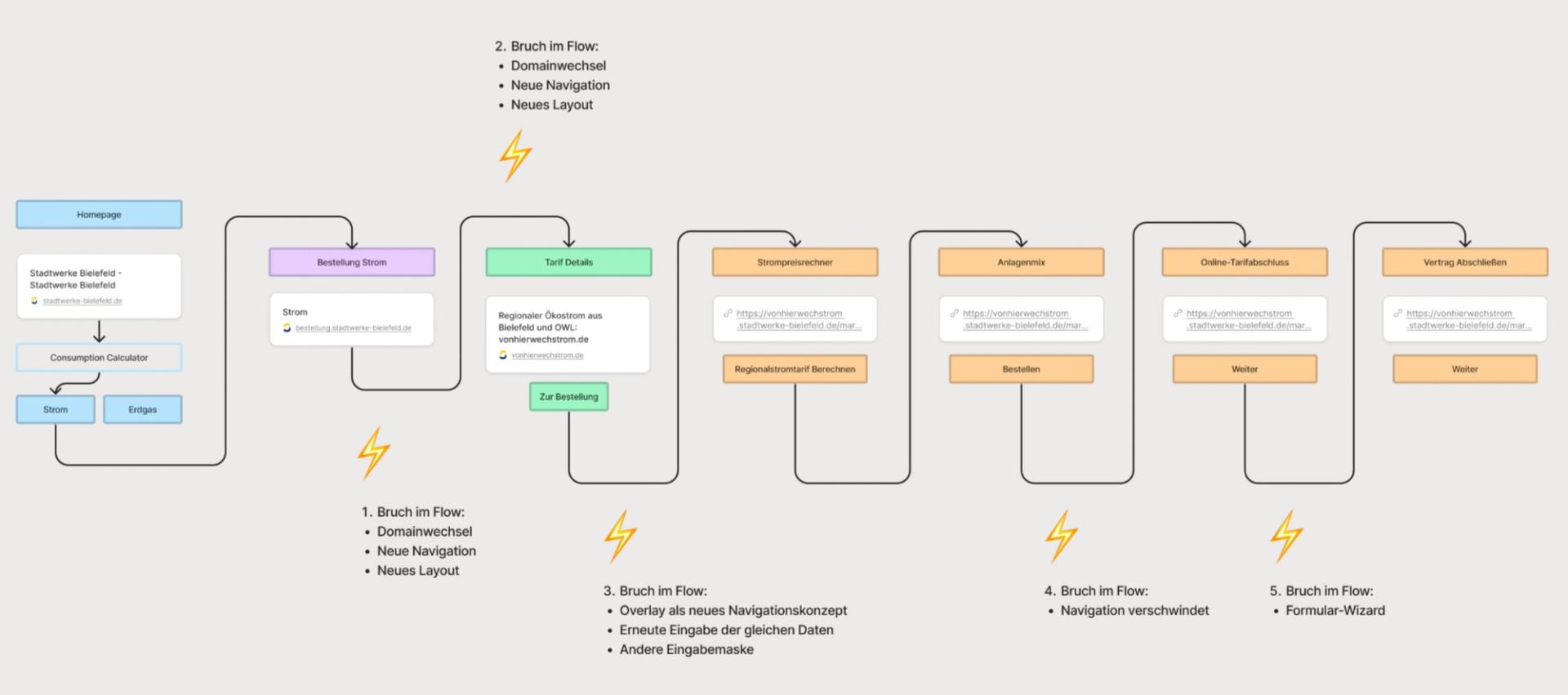
Score Card Link to this headline
A score card is a graded identification of common issues across the five areas of expertise: Product Strategy, User Experience, Interaction, Design, and Implementation. Each issue is rated based on its severity and impact on the user experience.
Why It Is Important Link to this headline
- Prioritization: A score card helps teams prioritize issues based on their severity and impact. This ensures that the most critical problems are addressed first.
- Action-Oriented: By grading issues, the score card provides a clear action plan, guiding teams on where to focus their efforts for maximum improvement.
- Holistic View: It offers a comprehensive overview of all identified issues, ensuring that no critical aspect of the user experience is overlooked.
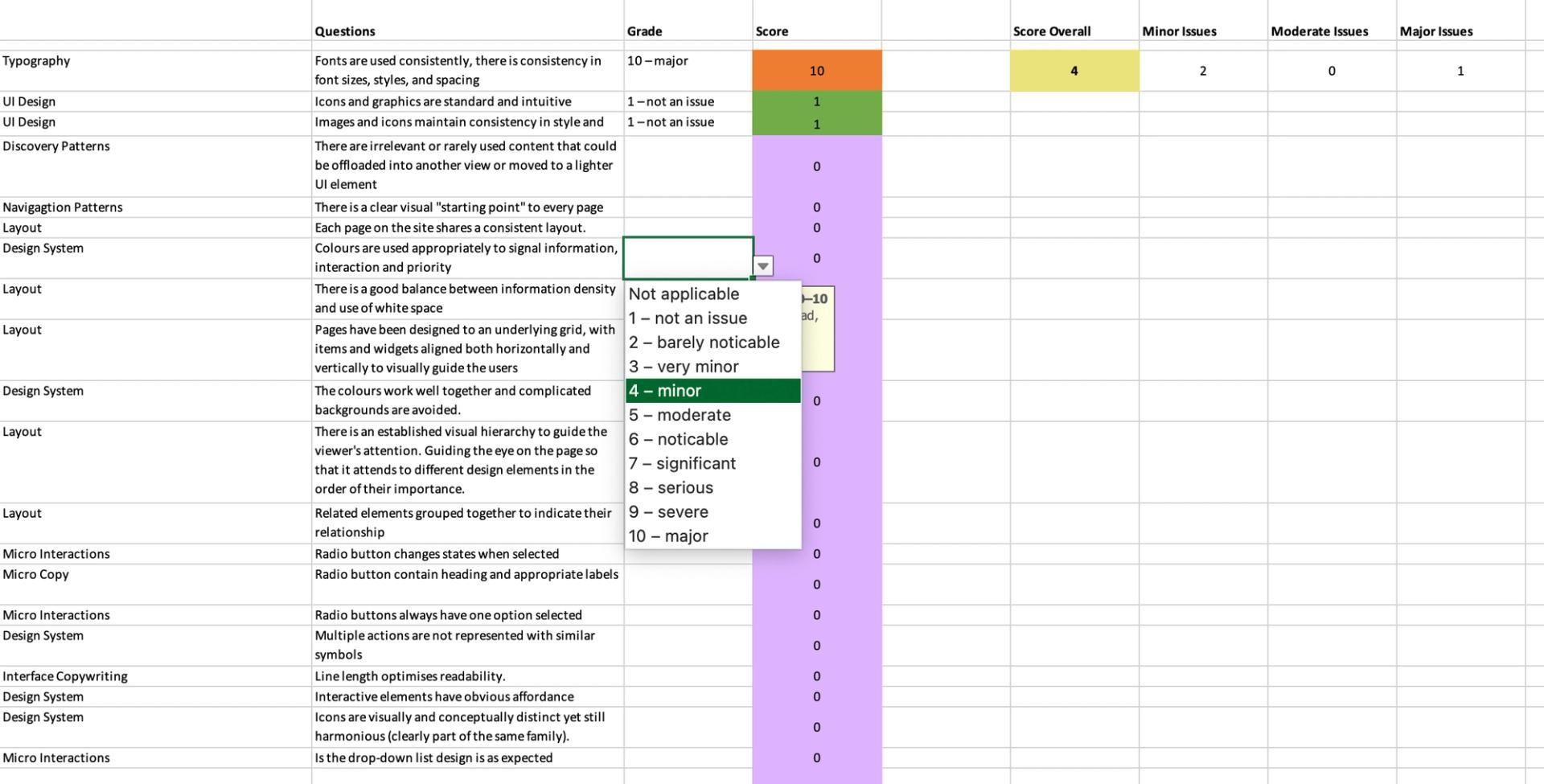


Impact/Effort Matrix Link to this headline
The Impact/Effort Matrix is a strategic tool that categorizes issues based on their potential impact on the user experience and the effort required to fix them. Issues are clustered into high/low effort and high/low impact categories.
Why It Is Important Link to this headline
- Strategic Planning: This matrix helps teams strategize by showing which issues will have the most significant impact with the least effort, allowing for quick wins.
- Resource Allocation: It aids in efficient resource allocation by highlighting high-impact, low-effort tasks that should be prioritized.
- Long-Term Planning: By identifying high-effort, high-impact issues, the matrix also supports long-term planning and resource investment decisions.
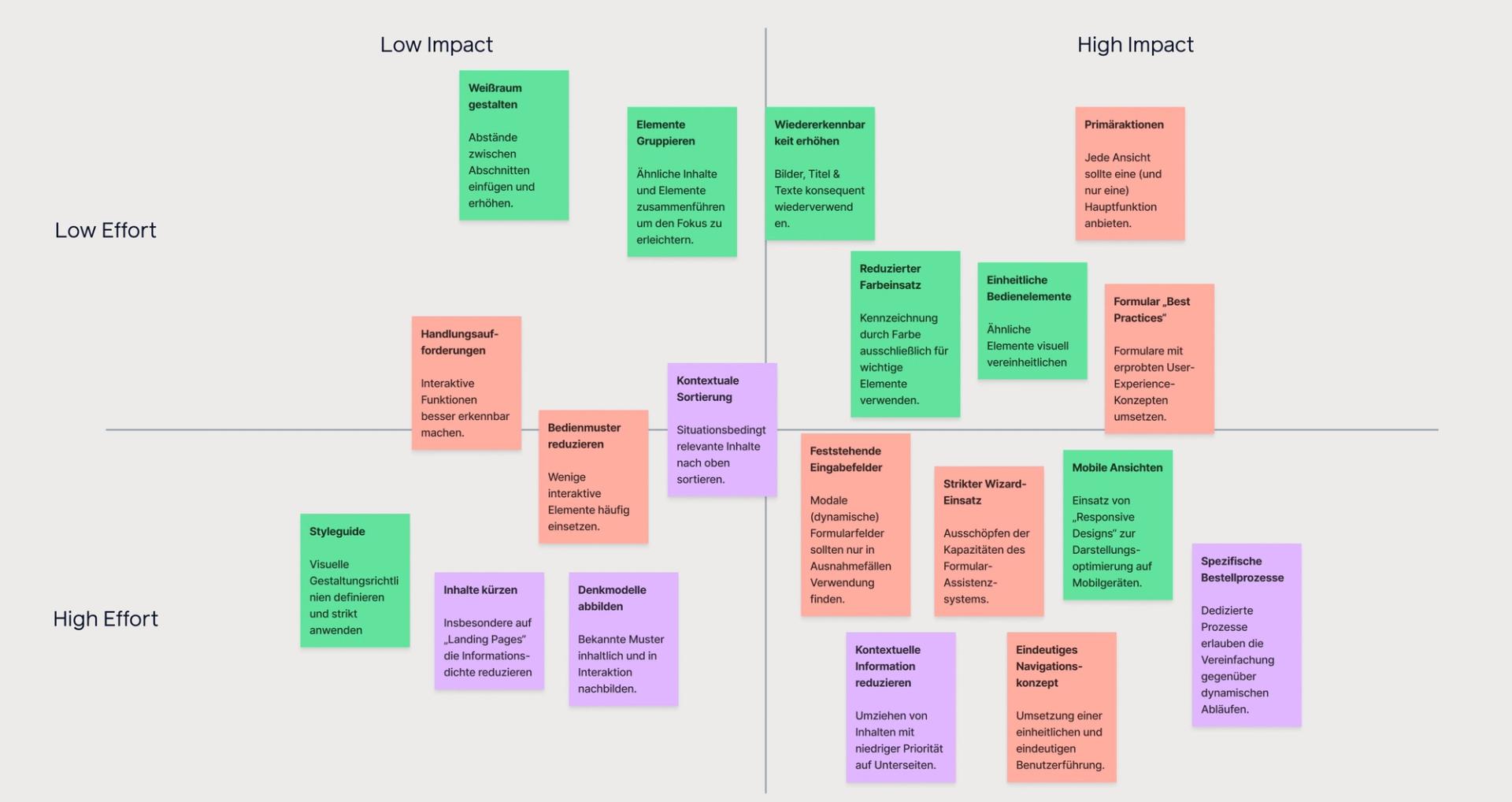
Pitch Deck Link to this headline
A pitch deck is a compiled presentation of the identified issues and proposed solutions. It is designed for internal sharing and stakeholder management, ensuring everyone involved is on the same page.
Why It Is Important Link to this headline
- Stakeholder Communication: The pitch deck provides a concise and compelling way to communicate findings and recommendations to stakeholders, ensuring their buy-in and support.
- Decision-Making: It aids in decision-making by presenting a clear overview of the issues, the proposed solutions, and their potential impact on the user experience.
- Alignment: The pitch deck ensures alignment among different teams and stakeholders, fostering a collaborative approach to solving UX issues.
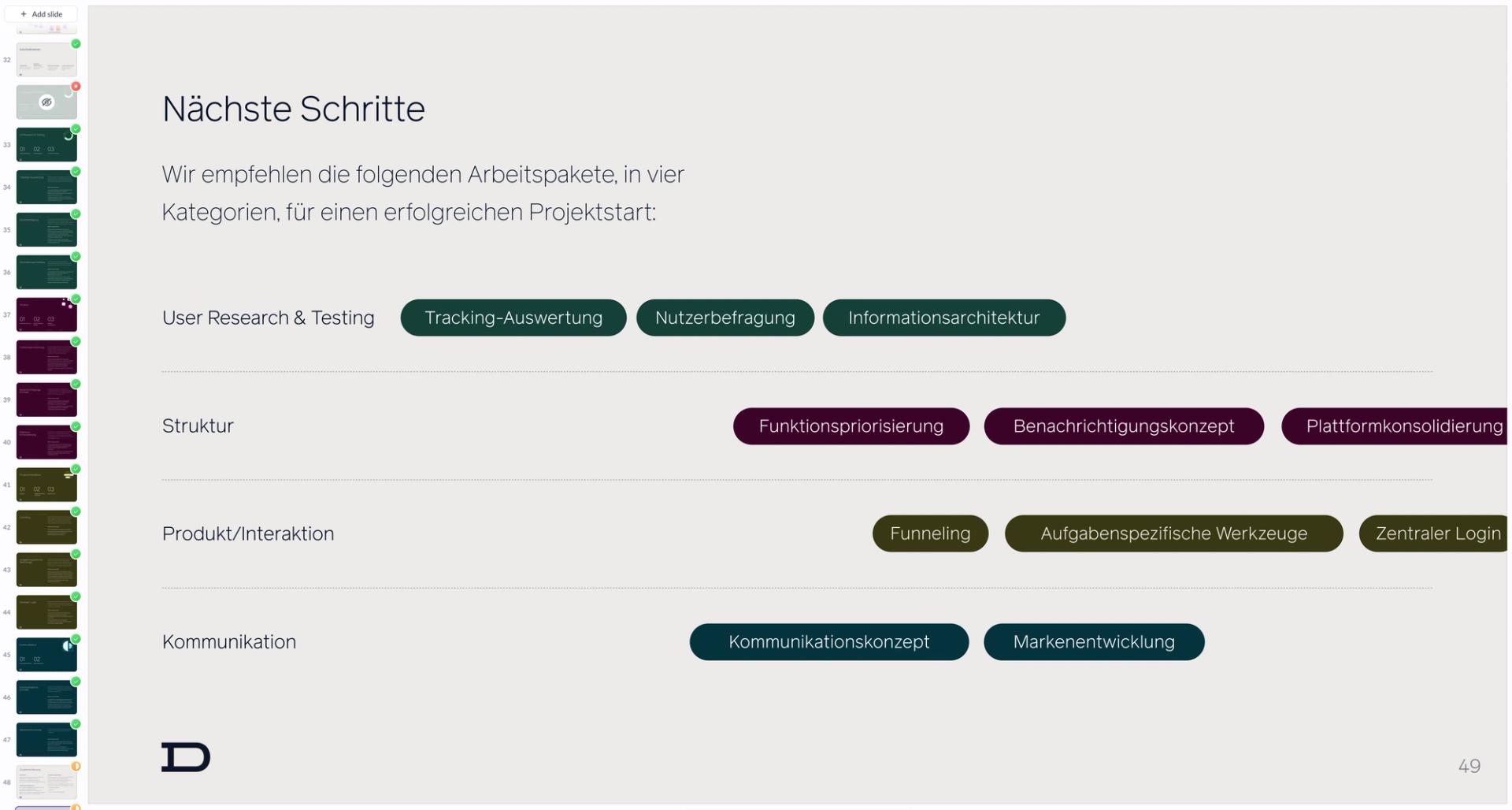
Stakeholder Presentation Link to this headline
The stakeholder presentation is a comprehensive walkthrough of the UX audit findings, designed to engage and inform the client and their stakeholders. It includes a Q&A session to discuss recommendations and next steps.
Why It Is Important Link to this headline
- Engagement: Engaging stakeholders through a live presentation ensures they understand the findings and their implications.
- Clarification: The Q&A session allows for clarification of any doubts or concerns, ensuring everyone has a clear understanding of the next steps.
- Alignment and Buy-In: Presenting the findings in a structured manner helps secure stakeholder buy-in, aligning everyone towards common goals for improving the user experience.
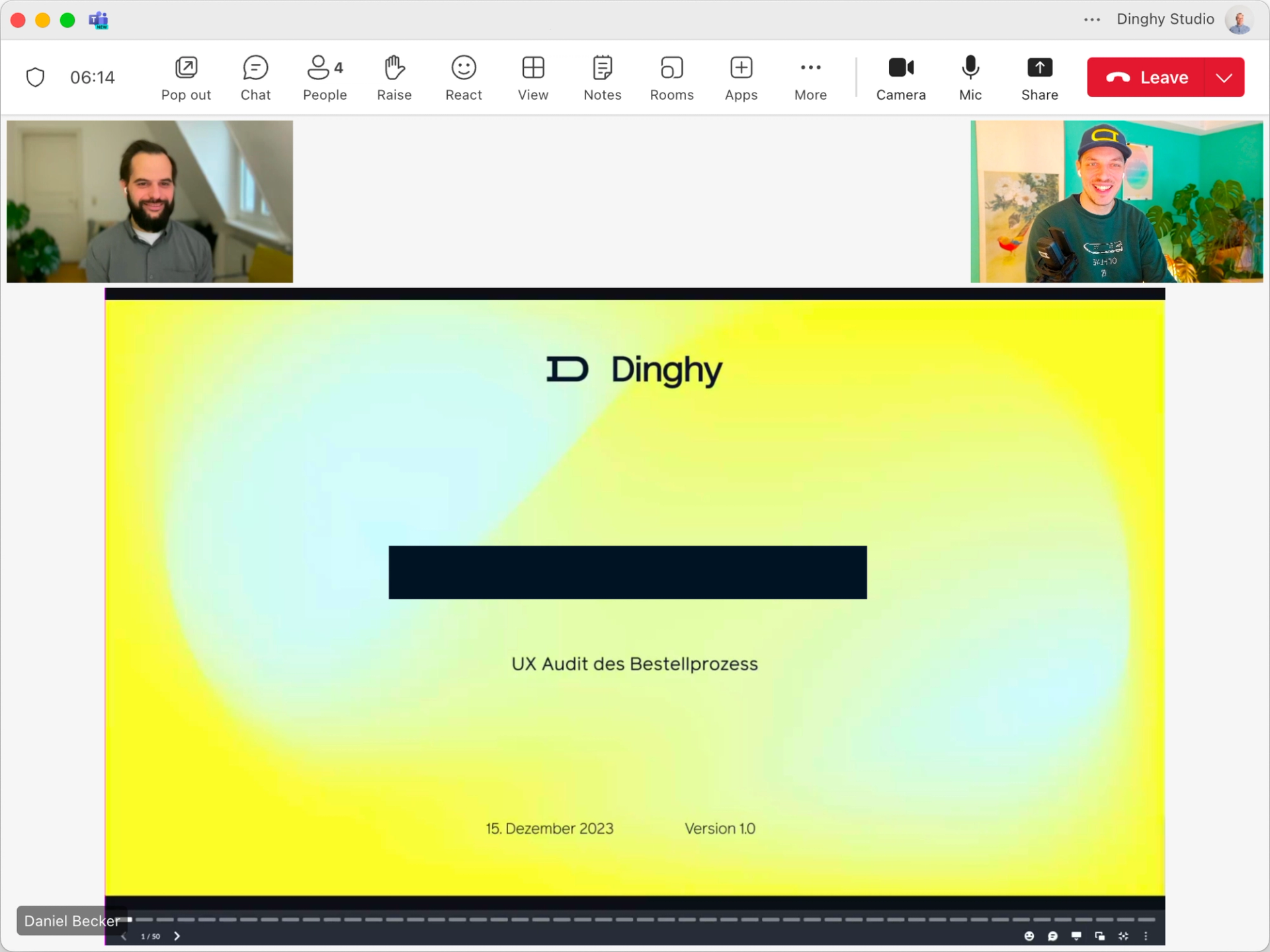
Frequently Asked Questions Link to this headline
Why are deliverables important in a UX audit?
- Usability Testing
- Discovery Research
Deliverables are crucial in a UX audit because they provide tangible evidence of the findings and recommendations. They help communicate the audit results clearly and effectively to stakeholders, ensuring everyone understands the issues and proposed solutions. This clarity facilitates better decision-making and prioritization of improvements.
How do deliverables enhance stakeholder communication and alignment?
- Usability Testing
- Discovery Research
Deliverables such as annotated screenshots, user journey documentation, and scorecards make it easier to share insights and findings with stakeholders. They provide a structured and visual way to present information, ensuring all parties are on the same page. This alignment is essential for gaining stakeholder buy-in and support for implementing UX improvements.
Why is documenting user journeys important in a UX audit?
- Usability Testing
- Discovery Research
Documenting user journeys captures the actual paths users take as they interact with your app or website. This helps identify pain points and areas where users may encounter difficulties, providing insights into underlying issues. Understanding these journeys allows for targeted enhancements, improving overall user satisfaction and retention.


